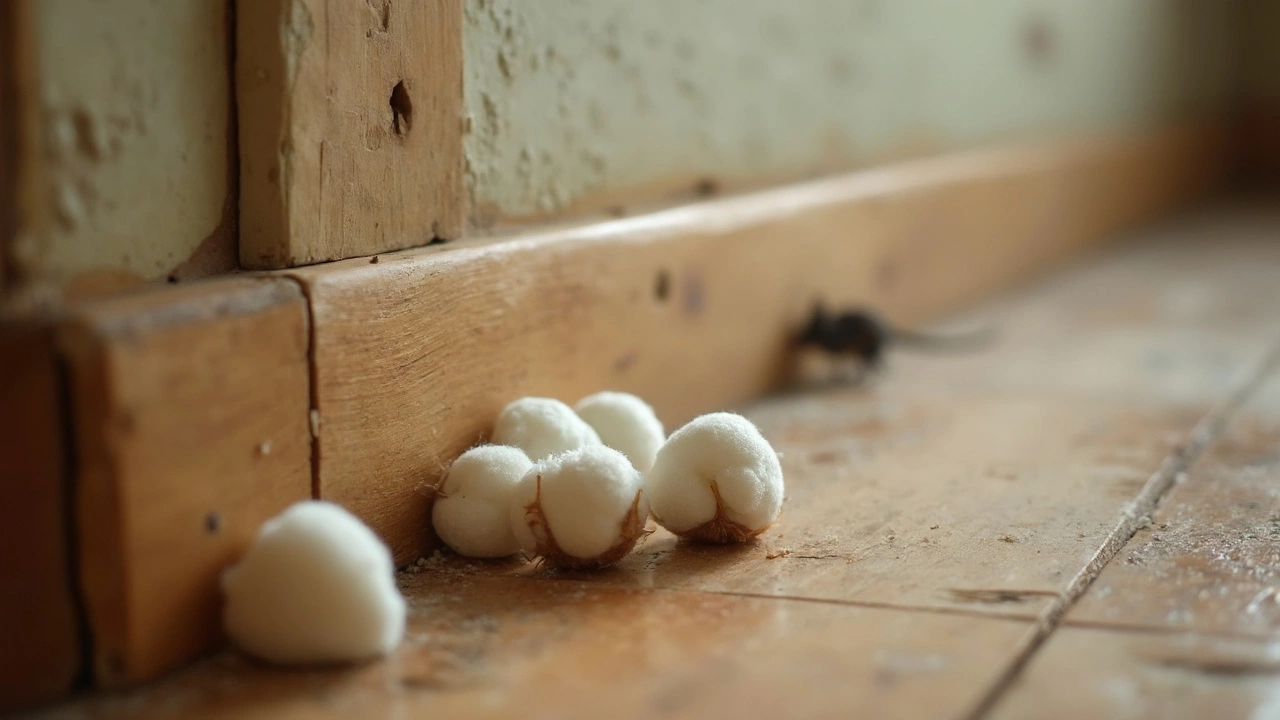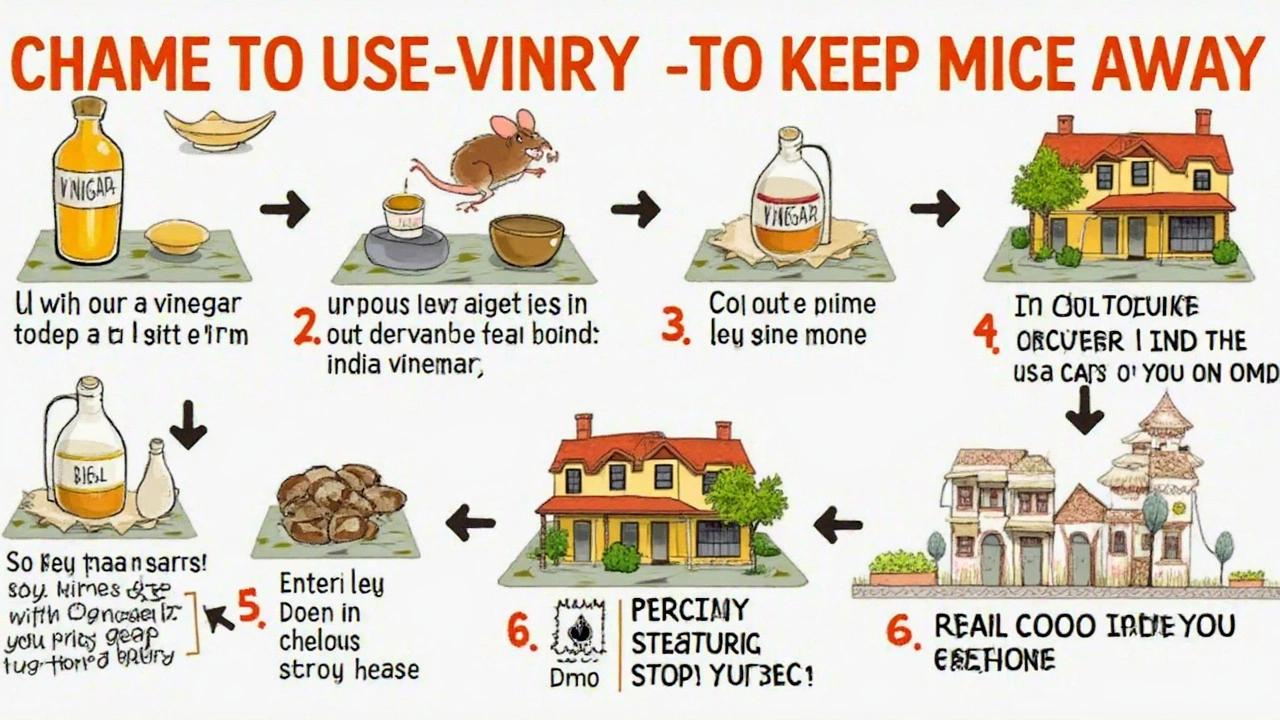Mice have a knack for showing up where you least want them: kitchen cupboards, under sinks, or those random storage boxes you left in the garage. If you ever found mouse droppings in your pantry, you know that sinking feeling. Here’s a wild fact: mice can squeeze through holes the size of a pencil. Why do these tiny escape artists hate vinegar so much, and does this household staple actually work as a real deterrent? The truth lies partly in their snouts—and a little in ours too, once you get a whiff of that unmistakable sharp tang in the air.
The Science: Why Are Mice Repelled by Vinegar?
Catch a mouse in your house sniffing around, and you might notice it flinching away from anything sharply scented. Mice have an insane sense of smell. They’re like tiny four-legged bloodhounds. Their noses guide them to food and away from danger. Now, acetic acid—the main active ingredient in vinegar—is what gives it that nose-tingling punch. For a human, it’s pungent, even unpleasant up close. Imagine that sensation, but 1,500 times stronger. That’s the kind of sensory assault a mouse takes from undiluted vinegar.
According to animal behavior studies, mice rely on smell more than sight or sound. Vinegar’s acid vapor interrupts the pheromone trails they use to communicate and travel. If they can’t smell their own tracks—or anything beyond the sour vinegar buzz—they get disoriented. A 2019 study from Hokkaido University even nailed down that acid-based repellents block the communication mice use to identify safe paths. This means vinegar doesn’t just annoy mice—it genuinely scrambles their navigation system at the molecular level.
While it’s not toxic to them, they find it irritating enough to avoid places where they catch that signature scent. Think about the last time you got vinegar near your eyes or nose—most folks jerk away fast. For a mouse, it’s like walking into a wall of invisible stinging nettles.
How Vinegar Gets Rid of Mouse Scents and Trails
Let’s talk trails. Mice lay down pheromones—essentially tiny scent highways leading other mice straight to food and safe nesting spots. When you wipe counters or floors with vinegar, you do two things at once: you erase those trails and you lay down a scent that screams "stay away." Cleaning up mouse zones with vinegar not only gets rid of bacteria and crumbs, it also wipes out the pheromone markers. This matters because mice are real fans of shortcuts. Remove their markers, and they lose their internal map.
Use vinegar where mice have been seen, or anywhere you suspect their activity. It’s most useful tucked behind appliances, along baseboards, in corners of pantries, and under sinks—basically places Fiona and I would never think to check unless we noticed mouse droppings first.
For best results, use white distilled vinegar—its acetic acid content is higher and longer-lasting than apple cider vinegar. Spray a mix of half vinegar and half water on hard surfaces, let it sit for a few minutes, then wipe. Want an extra burst? Apply straight vinegar on cotton balls and tuck them into mousey hideouts (just remember to replace them every couple of days as the scent fades).

Does Vinegar Alone Work as a Mouse Deterrent?
Here’s where it gets interesting. While vinegar is a solid short-term fix, it won’t save you from a serious infestation. Mice will steer clear at first—their risk radar is blaring. But after a while, if food is scarce and conditions are right, hunger drives them back, even through stinky patches. It’s a classic case of survival beating discomfort.
This is why pest control experts say vinegar is best as part of a bigger plan. Think of it like cleaning up your room: vinegar gets the mess out, but if you leave snacks out in the open, mice will probably come back. Combine vinegar with these tips:
- Seal food in glass or metal containers. Plastic is a joke for rodents; they chew through it fast.
- Block up holes using steel wool and caulk—mice hate chewing through rough, metallic stuff.
- Keep trash bins lidded and emptied regularly, especially in the kitchen.
- Clear old food under ovens and around fridge motors—they love these warm, crumb-filled nooks.
- Trim shrubs and pick up fallen fruit around your house’s exterior; mice sniff these out as easy meals.
If I ever slipped up on these points, Fiona would have me scrubbing floors with vinegar until the mice begged for mercy. The bottom line is, vinegar makes your place less appealing, but unless you address access and food, you’re just masking the real attraction.
Extra Boost: Combining Vinegar with Other Natural Repellents
Some folks like to supercharge their vinegar spray. Add essential oils like peppermint, clove, or eucalyptus—each one is naturally irritating to rodents. A 2022 CDC study found that peppermint combined with vinegar upped mouse avoidance by 32% compared to plain vinegar. Just mix ten drops of oil per cup of vinegar-and-water spray for a nose-blasting combo.
Cayenne pepper is another trick. Sprinkle it after a vinegar wipe-down for a one-two punch: the scent and the heat both repel. Mice have sensitive skin around their paws and noses; after dancing across a vinegar-cayenne trap, they get the point—the hard way. I tried this in our garage after a cold snap last year and, not to brag, but we haven’t seen a nibble since.
Here’s a quick brew for a natural repellent:
- Half-cup white vinegar
- Half-cup water
- 15 drops of peppermint oil
- 2 teaspoons cayenne pepper (optional, but do not use with pets in the area)
Shake it all up in a spray bottle, hit all the sneaky spots, and watch how quickly the nightly pitter-patter disappears. Keep it fresh; oils and vinegar lose their edge after a day or two. And remember, if you have pets, check which oils and spices are safe around them—peppermint and cayenne might be a problem for cats and dogs in big doses.

Real-Life Data: Does Vinegar Stack Up to Commercial Mouse Repellents?
If you’re the skeptical type, you probably want numbers. Here’s a look at real test results. Most studies pit vinegar against commercial repellents, like peppermint sprays, ultrasonic gadgets, and chemical blocks. Check out this simplified table based on a roundup of research from 2021–2024:
| Method | Repellency Rate (first 7 days) | Cost | Duration of Effectiveness |
|---|---|---|---|
| Vinegar spray | 66% | Low | 1–2 days |
| Peppermint oil (commercial spray) | 74% | Medium | 2–5 days |
| Ultrasonic repeller | 47% | High | 3–4 weeks (varied) |
| Traps + vinegar cleaning | 88% | Low | Varies |
As you can see, vinegar for mice repels most critters for a day or two, especially if you use it after other cleaning steps. It’s cheap, easy to find, and non-toxic—but not magic. Teams get the best results by mixing methods. Use vinegar, then set traps for any mice stubborn (or hungry) enough to return, and don’t forget to patch up entry holes. As for my house? Every spring, I make it a habit to wipe baseboards with vinegar and check for holes—better safe than sorry when you know what an ambitious rodent can do.
Bottom line: vinegar interrupts mouse routines and makes your house far less inviting. Does it solve every mouse problem forever? Nope. But it’s a dead-simple, budget-friendly step that can cut your chances of seeing—or smelling—another mouse by a pretty wide margin.

